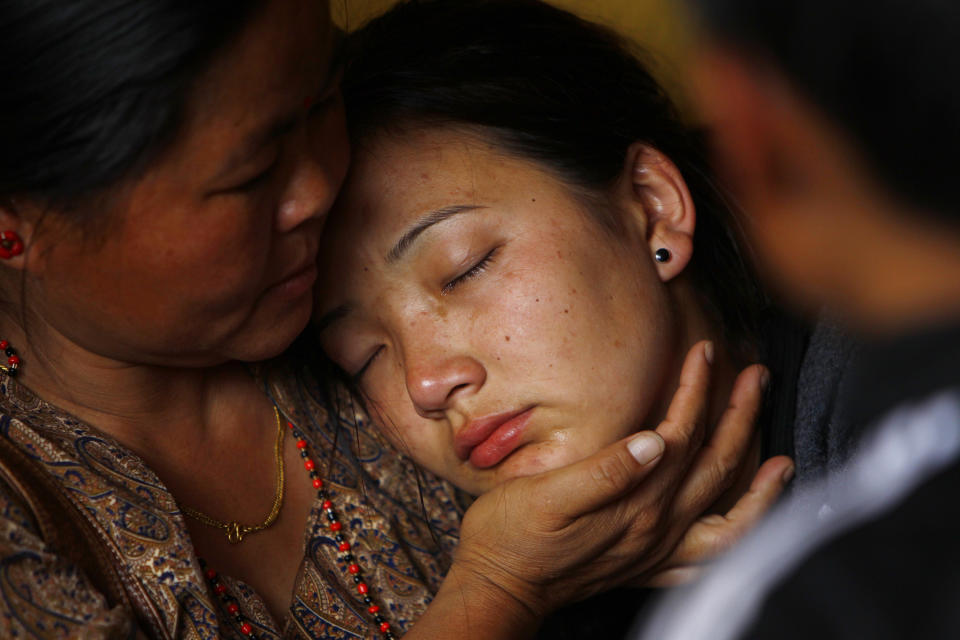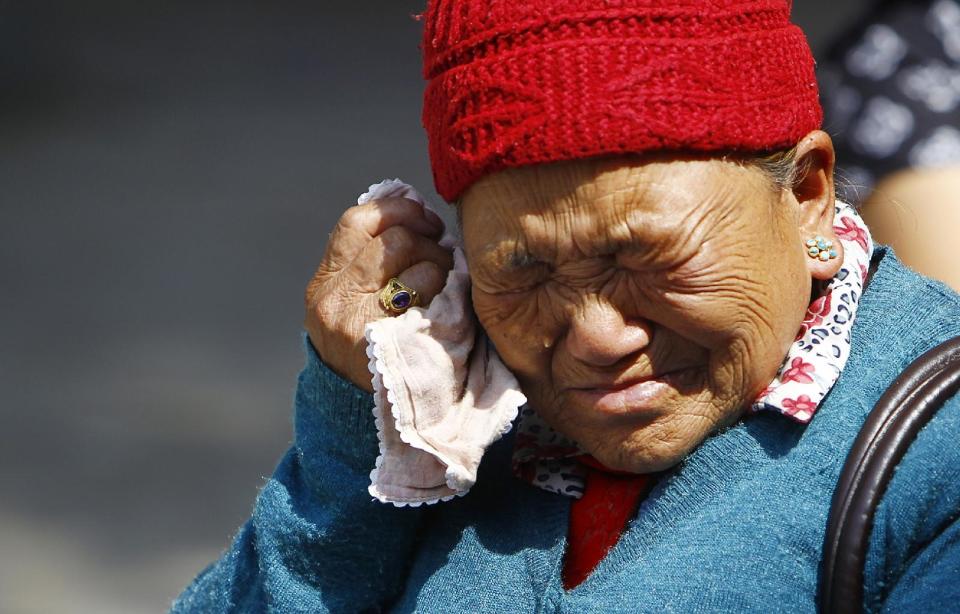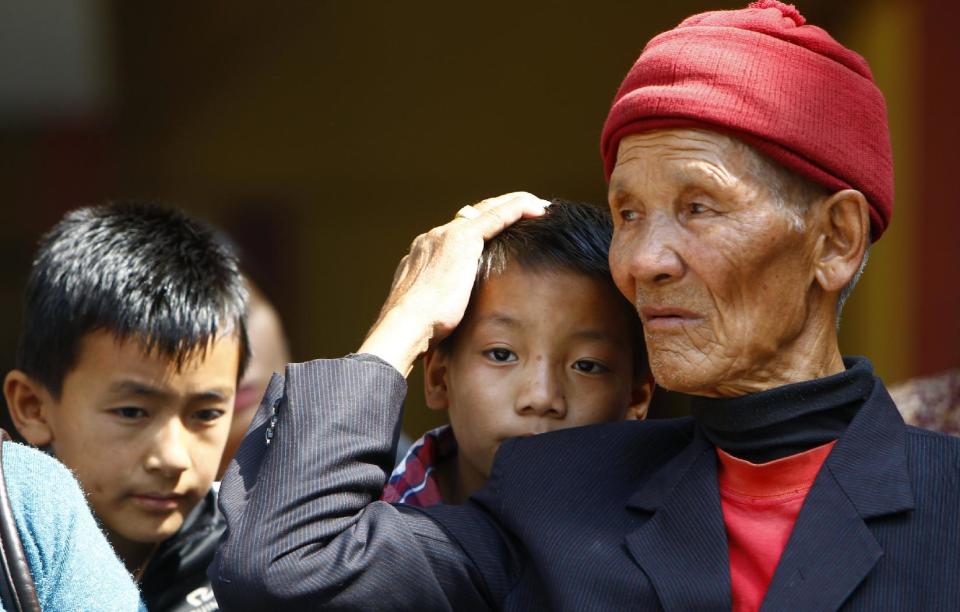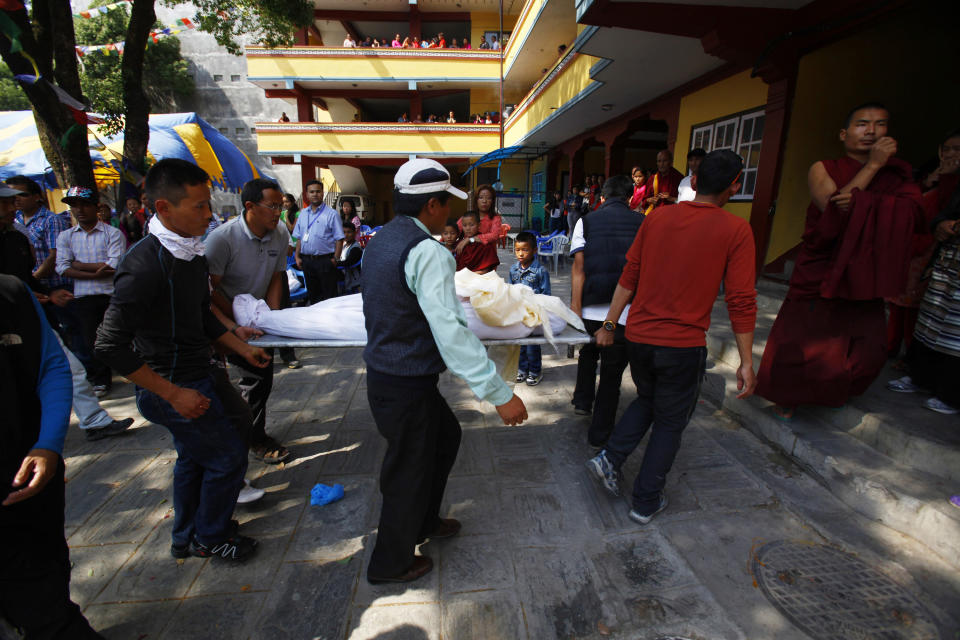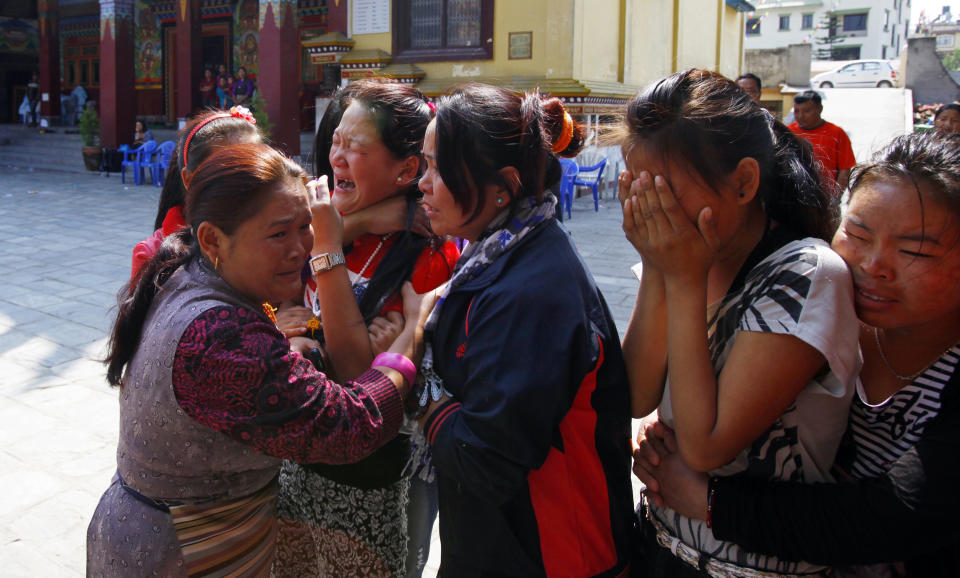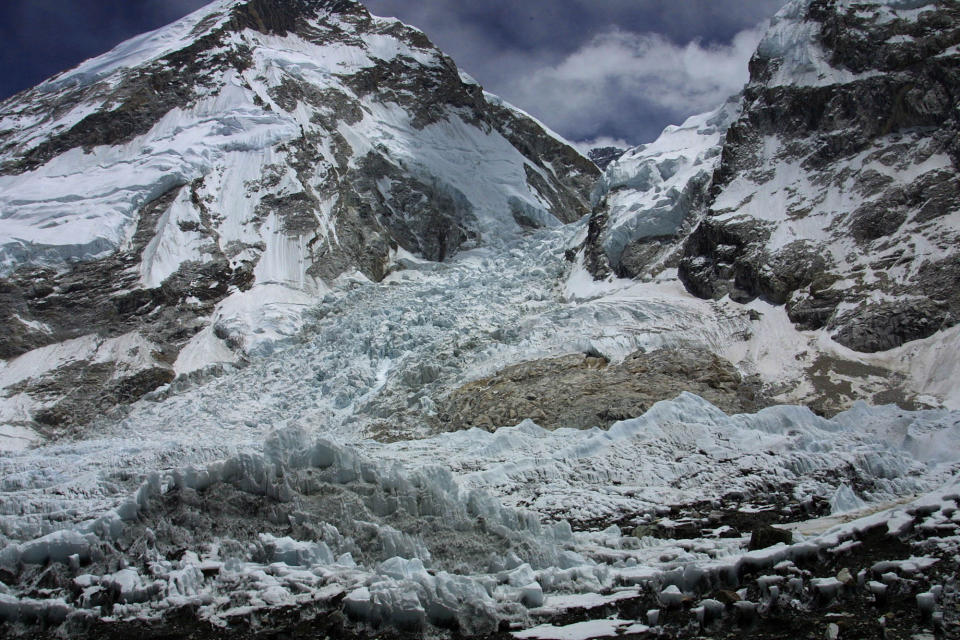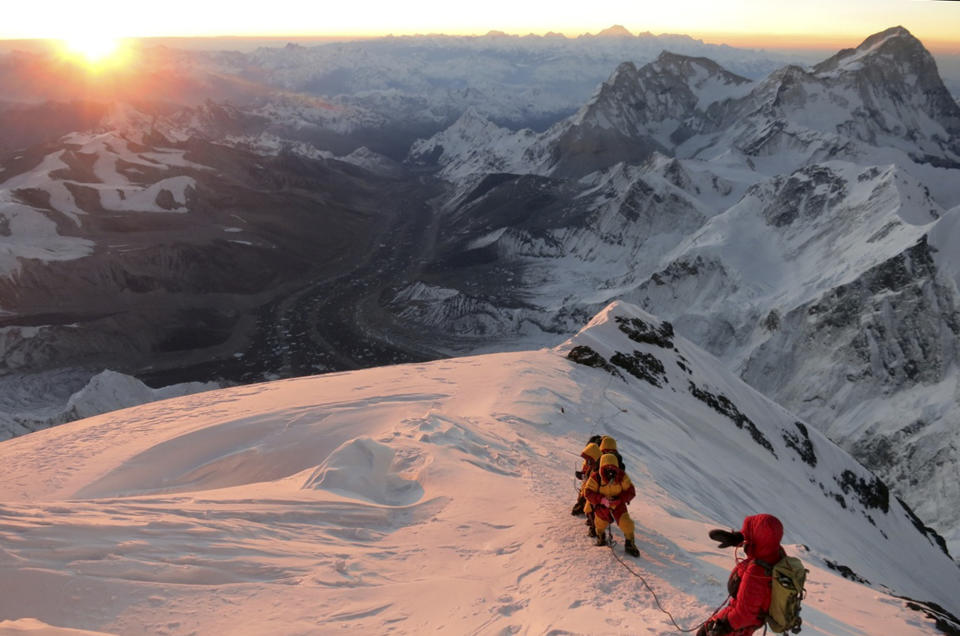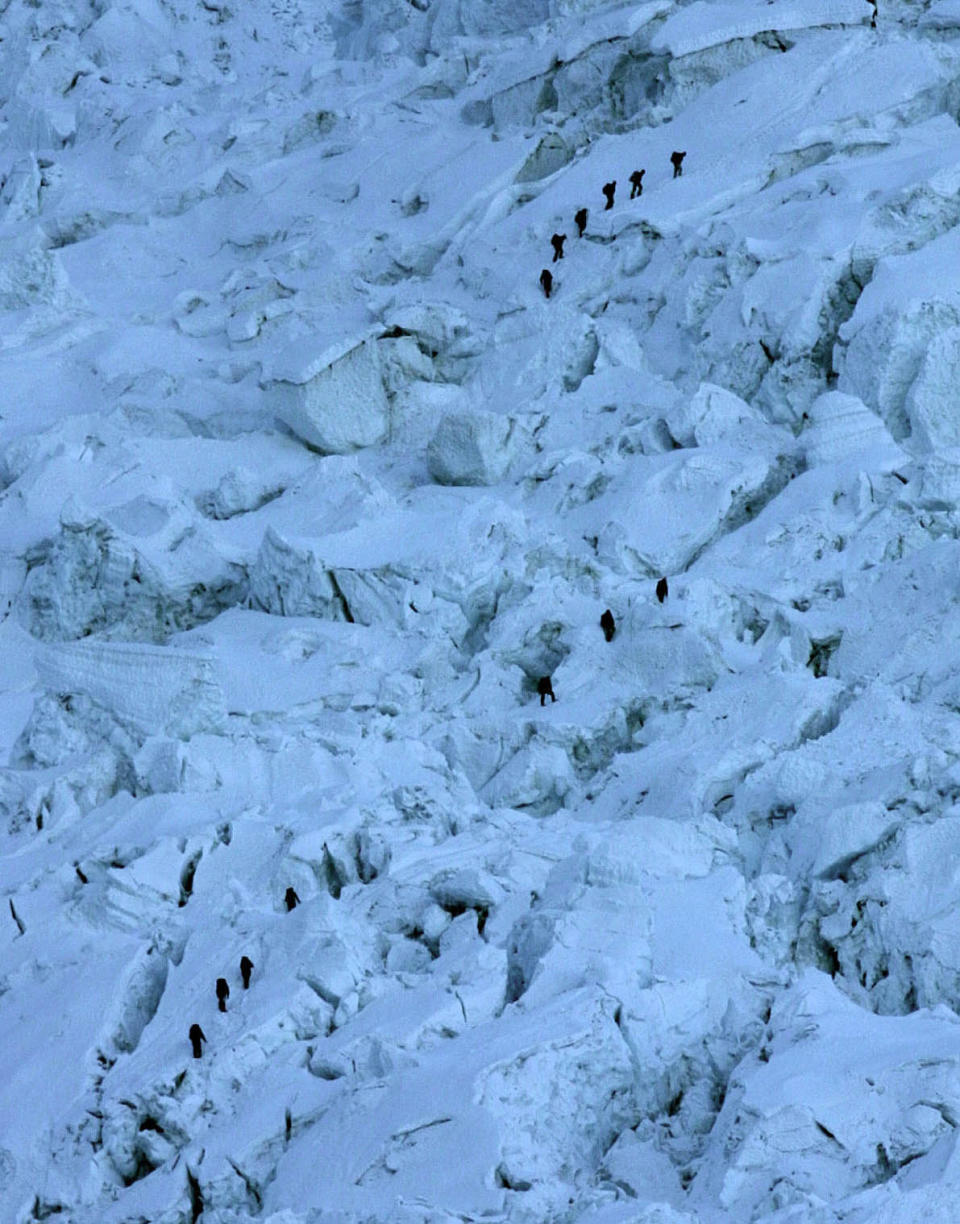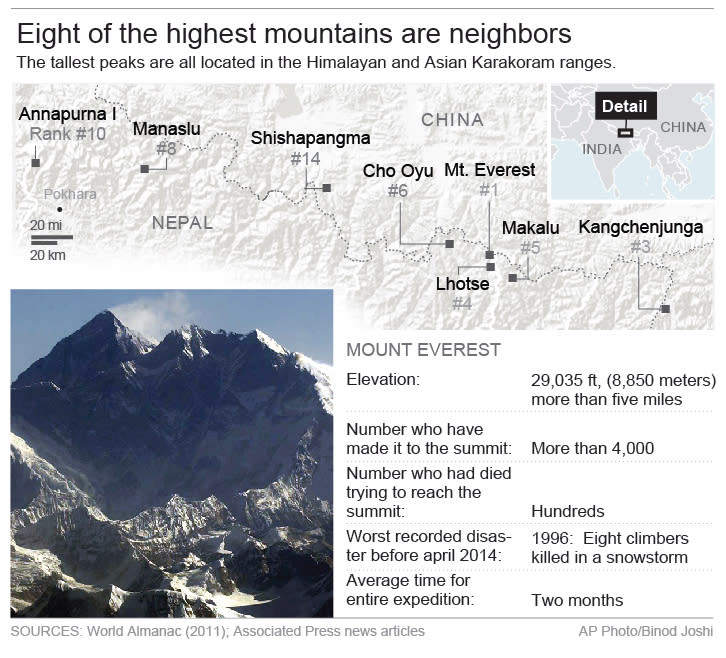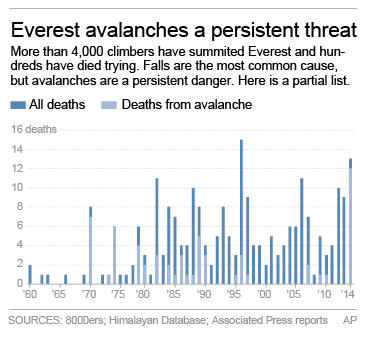13th body pulled from snow in Everest avalanche
KATMANDU, Nepal (AP) — Nepal's authorities temporarily halted climbing on Mount Everest while search teams dug through snow and ice Sunday for three Sherpa guides missing in the deadliest avalanche on the world's highest peak that killed 13 others.
A section of the route over the dreaded Khumbu Icefall, a climbing pass where the avalanche swept a group of guides early Friday, has totally collapsed and a new trail has to be dug, ropes fixed and aluminum ladders laid over the crevasses before climbing can resume, said Ang Tshering of the Nepal Mountaineering Association.
Another group of Sherpas, who had already passed before the avalanche struck, were stranded on the other side and would only be able to get back to base camp once the new route is fixed, Tshering said.
Despite losing so many guides, there were no plans by expedition teams to abandon their attempt to climb the peak next month, he said.
Maddhu Sunan Burlakoti, head of the Nepalese government's mountaineering department, said that the search for the missing three climbers resumed Sunday. They were among about 25 Sherpa guides hauling gear to the higher camps that their foreign clients would use in attempting to reach the summit next month.
One of the survivors told his relatives that the path had been unstable just before the snow slide hit at an elevation near 5,800 meters (19,000 feet). The area is considered particularly dangerous due to its steep slope and deep crevasses that cut through the snow and ice covering the pass year round.
As soon as the avalanche occurred, rescuers, guides and climbers rushed to help, and all other climbing was suspended.
Four survivors were conscious and being treated in the intensive care units of several Katmandu hospitals for broken ribs, fractured limbs, punctured lungs and skin abrasions, according to Dr. C.R. Pandey from Grande Hospital. Others were treated for less serious injuries at the Everest base camp.
Jon Reiter from Kenwood, California, said he was climbing with an Australian partner when his Sherpa guide pushed him behind ice blocks and out of harm's way when the avalanche struck.
"We were moving up to Camp 1 just after dawn when we heard that 'crack,' " said Reiter, 49. "My first thought was to film it, and I reached for my camera. But the Sherpa yelled to get down. Things started happening in slow motion. Big blocks of snow and ice started coming down all around."
He talked to the Santa Rosa Press Democrat (http://bit.ly/1hcOA0R ) in an interview by satellite phone from base camp in Nepal, where he wrote a blog entry to let family and friends know he was OK.
It's not clear how close Reiter was to the avalanche when it killed the Sherpa guides. But in response to questions, Reiter wrote on his blog Saturday: "There were very few western climbers in the area and all of us had our climbing Sherpa by our sides and they all survived."
Hundreds of climbers, guides and support crews had been at Everest's base camp preparing to climb the 8,850-meter (29,035-foot) peak when weather conditions are most favorable next month. As with each year, the Sherpa guides from each of the expedition teams had been working together to prepare the path by carving routes through the ice, fixing ropes on the slopes and setting up camps at higher altitudes.
The Sherpa people are one of the main ethnic groups in Nepal's alpine region, and many make their living as climbing guides on Everest and other Himalayan peaks.
More than 4,000 climbers have summited Everest since 1953, when it was first conquered by New Zealander Edmund Hillary and Sherpa Tenzing Norgay. Hundreds have died trying.
The worst recorded disaster on Everest had been a fierce blizzard on May 11, 1996, that caused the deaths of eight climbers, including famed mountaineer Rob Hall, and was later memorialized in a book, "Into Thin Air," by Jon Krakauer. Six Nepalese guides were killed in an avalanche in 1970.
Earlier this year, Nepal announced several steps to better manage the heavy flow of climbers and speed up rescue operations. The steps included the dispatch of officials and security personnel to the base camp at (5,300 meters) 17,380 feet, where they will stay throughout the spring climbing season, which ends in May.

